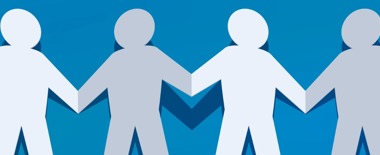Take a look at our articles or search by a particular resource type or area of interest. Can't find what you're looking for? Get in touch.

Groupthink and the importance of behavioural diversity
What’s the tipping-point? When does a team become a group? How does the psychology change, and what influence does this have on individual behaviours?

Belbin and Change Webinar
During this webinar we discuss and share how we have helped teams through periods of change, and the part each Belbin Team Role plays.

Building Intergenerational Teams with Belbin Team Roles
We analysed over 60,000 responses to the Belbin Self-Perception Inventory / SPI from candidates in 183 countries, across 22 industries. Here are the results

Case study: 'Coffee is a Team Sport': How Belbin provided an understanding of natural talents to enable transformation
Caravela Coffee used Belbin Team Roles to support transformation of their Leadership Team to set them on a path to sustainable organisational change.

Case study: Measurable development and lasting impact through 'a relentless focus on behaviours'
Legal & General used Belbin in their award winning talent development programme, helping participants understand their strengths, boost confidence and identify engaging career paths.

Can my Belbin Team Roles change?
Belbin measures behaviour, rather than personality. Since behaviour changes, we can expect our Team Roles to change over time as well. But what might cause this change?

Finding Your Authentic Contribution in the Age of AI
A guest blog by Candice Collier, Director of teamhub at Belbin NZ The future is here, full of possibilities for those willing to embrace change, learn continuously, and lead with purpose.

Making the learning stick: sustainable behaviour change for real teams
In the last of our series of articles responding to McKinsey’s paper ‘Go, teams’, we examine how to work towards sustainable changes that make a real difference to teams.

Mind the Gap
The 2nd in this series of articles responding to McKinsey’s ‘Go, teams’. We examine their key drivers for team effectiveness, and explore a common myth: teams already know what they need to work on.

Case study: Embracing Change and Improving Team Collaboration with Belbin
Solici (a division of Cambridge Healthcare Research) used Belbin to help embrace change following a restructure and to enhance their collective performance by building improving team collaboration.

Discovering Hot Water
The 1st article in a series of 3 written by Victoria Brown, Head of R&D at Belbin Ltd reviewing the McKinsey & Company article, "Go, teams: When teams get healthier, the whole organization benefits"

“We’ve done Belbin… What do we do now?”
If you've received your Belbin reports, your work is just beginning!